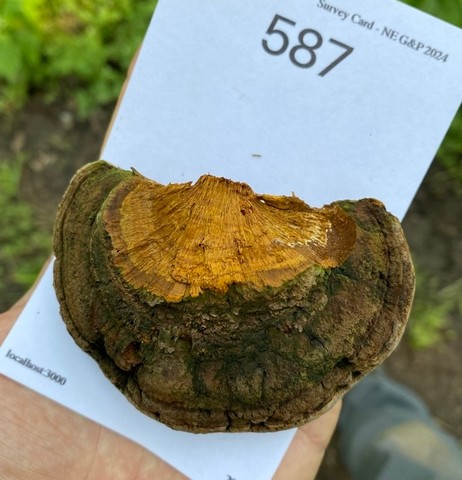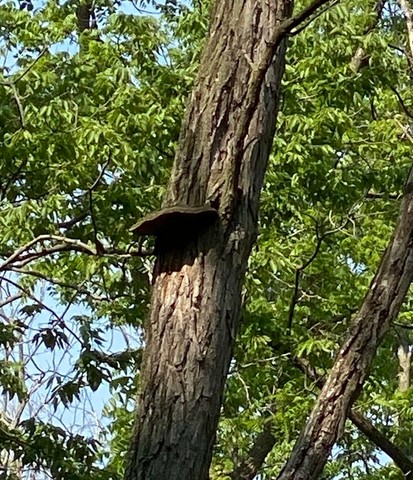Cracked Cap Polypore
Fulvifomes robiniae
Life > Fungi > Basidiomycota > Agaricomycotina > Agaricomycetes > Hymenochaetales > Hymenochaetaceae > Fulvifomes
Description
The Cracked Cap Polypore (Fulvifomes robiniae) is a parasite and decomposer of Black Locust (Robinia pseudoacacia). It is a tough perennial polypore that can be found year-round.
As the name suggests, the cap features cracked fissures. The cap color light brown when young and later transitions to black with age. The old fruiting bodies can get quite large. It's not uncommon to find specimens that are greater than a foot in diameter. The cap is sometimes covered with algae or moss. The cap is connected to its substrate without a stem (sessile).
The underside hymenophore presents a lighter brownish color, displaying a "sparkly" iridescence. It consists of tiny pores that might not be visible without a hand-lens.
Ethnomycology
The Cracked Cap Polypore can act almost as a "fire battery" or a way to store an ember overnight. Once the fruiting body has been ignited, it can keep an ember going for hours or days. From which future fires can be lit.
Observations
May 13th, 2024 Fontenelle Forest

587
- Growing on live Black Locust tree along woodland edge.
References
Bessette, A. E., Smith, D. G., & Bessette, A. R. (2021). Polypores and similar fungi of eastern and central North America : a resource guide (p. 138-139). University Of Texas Press.
Kuo, M. (2010, February). Phellinus robiniae. Retrieved from the MushroomExpert.Com Web site: http://www.mushroomexpert.com/phellinus_robiniae.html
Murrill, William A. (1914). Northern Polypores (p. 49). Murrill. https://www.biodiversitylibrary.org/page/31908357
Created December 15, 2025 at 10:41 AM

